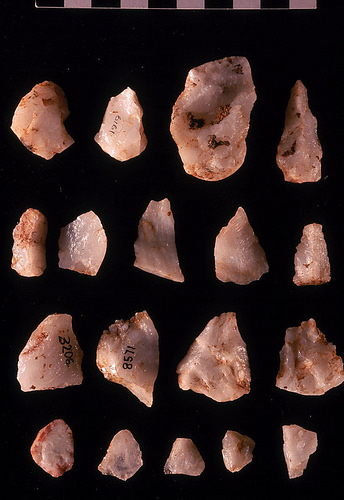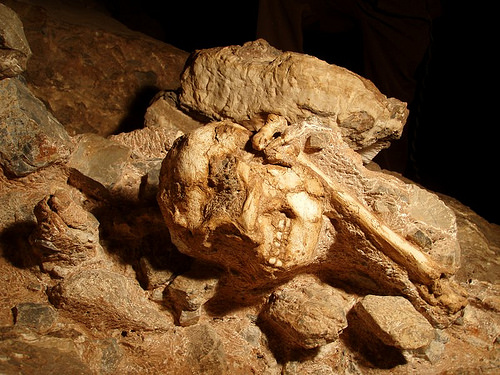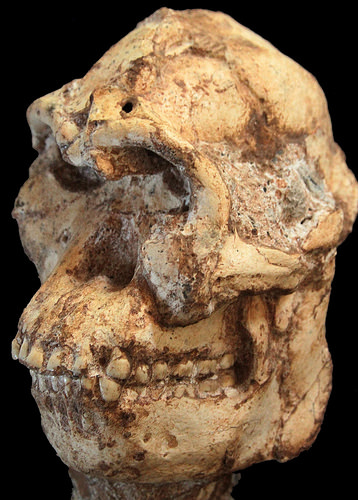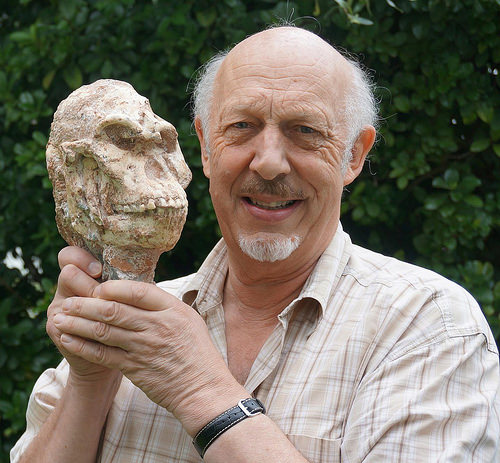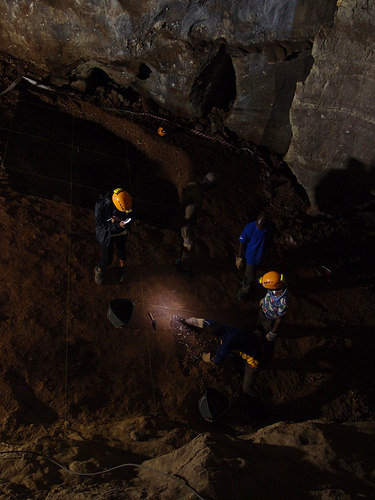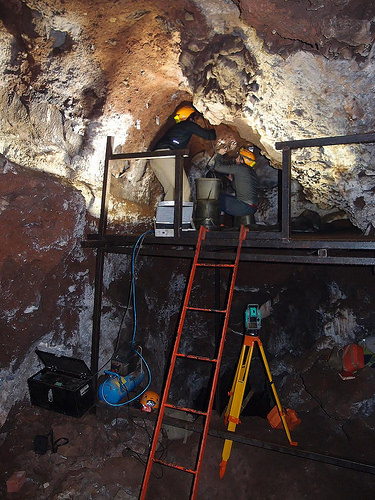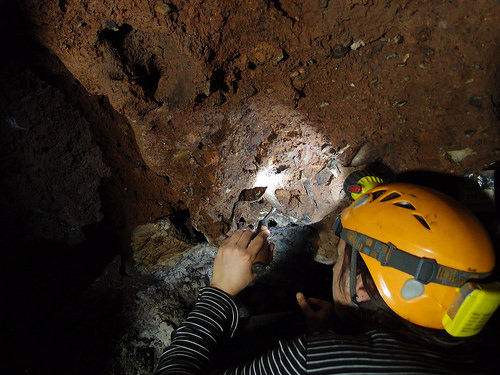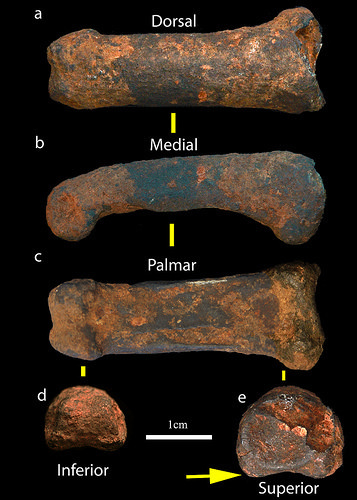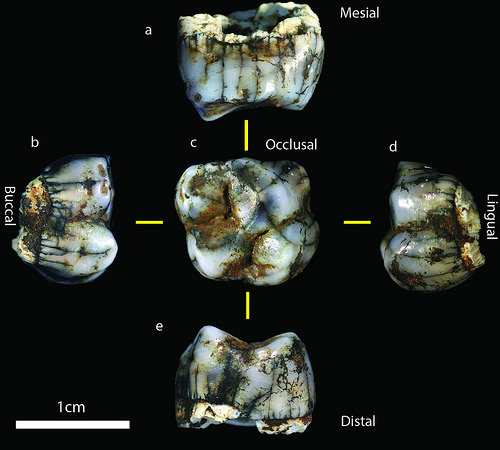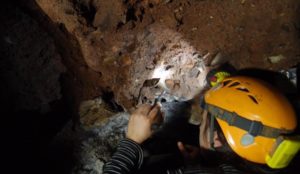
Few prehistoric sites can match the primacy of this site. Known to the world as Sterkfontein, it is widely regarded as one of the most important sites in the study of human evolution. A group of limestone caves located in South Africa’s Gauteng Province, the word means “strong spring.” It was declared a World Heritage Site in 2000. Archaeological excavations at the site have been ongoing for the past 80 years. Now, new finds have added to its prolific record of prehistory.
The Legacy
Famous for yielding the first fossil remains of the first adult specimen of Australopithecus africanus, discovered in 1936, Sterkfontein still remains the richest source of A. africanus specimens in the world. This early hominin, a genus important for understanding human evolution, lived in Southern Africa during the Plio-Pleistocene, between around 3 million and 2 million years ago (mya). Similar to Australopithecus afarensis, it exhibited a combination of human-like and ape-like features. Research on foot bones has demonstrated that it was bipedal, and recent studies of hand bones suggest that it was able to manufacture and use tools.
Thousands of stone tools have also been found at Sterkfontein, including the oldest stone tools in Southern Africa. Both Oldowan cores and flakes and Acheulean stone tools are abundant at the site, dating to between 2mya and 1mya. The Oldowan tools are believed to have been made by an early Homo species, while large numbers of Early Acheulean tools at Sterkfontein are attributed to Homo ergaster. Cores, flakes, manuports, choppers, handaxes, and cleavers have all been recovered from Sterkfontein and are dated to between 1.6mya and 1.1mya. Wood and other organic materials rarely survive in the archaeological record, but the conditions at Sterkfontein allowed some 300 wooden fragments to survive. After study of the fossilized wood, researchers have been able to determine that the habitat at Sterkfontein included a combination of tropical forest and savanna habitat about 2.6mya.
__________________________________________
Oldowan artifacts recovered from Sterkfontein. Courtesy University of the Witwatersrand (from the reference article, Cradle of Humankind Caves Yield New Ancient Dates.
______________________________________________________
But the cave system is perhaps best known for the discovery of two iconic hominin specimens. The first, nicknamed ‘Mrs. Ples’ by scientists, constitutes the most complete Australopithecus africanus skull ever discovered. Found in 1947, the fossil dates to 2.05–2.01 mya and revealed a surprising story to researchers at the time: she had a small cranial capacity, even though she walked upright, suggesting that bipedalism preceded any increase in brain size. There continues to be debate about whether Mrs. Ples is indeed a ‘Mrs.” She could be an adolescent, and possibly even a male.
The second iconic find, nicknamed ‘Little Foot’, was discovered in 1994, from the Silberberg Grotto in the Sterkfontein cave system. The excavation of this specimen has proven to be extremely difficult, as it was embedded in the breccia, and has taken over fifteen years. There has been some debate about the classification of this individual, whether it should be considered Australopithecus africanus or a new, different species called Australopithecus prometheus. The dating of this specimen has also been controversial, and many attempts have been made to determine a definitive date. All estimates have been roughly between 3mya and 2mya, although the most recent estimates – using a new radioisotopic technique – place the date at 3.67mya. Little Foot is remarkably well preserved, but in extremely delicate condition, and is currently in the final stages of preparation. The fossil is being described for upcoming publication by the hominin research team at Sterkfontein. Publication of this rare and distinct specimen will offer much insight into early hominin morphology and evolution.
__________________________________________
Little Foot as situated (in situ) within the Silberberg Grotto. It has since been removed from the cave context and brought into the lab. Courtesy University of the Witwatersrand
________________________________________________________
Above and below: The Little Foot skull discovered by Ron Clarke. Courtesy University of the Witwatersrand
___________________________________________________________
The deposits at Sterkfontein have yielded over 800 fossils, from four different hominin species: Australopithecus africanus, Australopithecus Prometheus, Paranthropus robustus, and Homo ergaster. Archaeologists have also discovered over 300,000 fossils from other animals, including primates, carnivores, bovids, small mammals, birds, elephants, and a number of extinct large animals. The diversity at Sterkfontein is unparalleled, making it a uniquely important site in both human and natural history. With a sequence of deposits ranging from 3.67mya to just 250,000 years ago, it documents the evolution of the landscape, environment, animals, and hominins. “There’s actually no other site like it, anywhere,” says Dominic Stratford, one of the lead researchers at Sterkfontein.
New Finds, New Technology
Recently, new hominin fossils were discovered in the Milner Hall chamber, deep within the Sterkfontein cave system. Scientists suggest they are most likely “early Homo” fossils – more recent than Australopithecus, but older than Homo ergaster. Stratford says they can’t be sure of the species until they find more specimens. “I am certainly planning further excavations in the Milner Hall,” he says. “There are untouched deposits that are very old and still need to be explored.” This area had previously never been investigated, as most of the excavations have historically focused on surface-exposed deposits – like the one where Mrs. Ples was found.
Now, deeper chambers continue to yield exciting, older fossils. Excavations are currently underway in the Jacovec Cavern, where preliminary finds have been made in recent months, and the Silberberg Grotto, where Little Foot was found. Researchers will also reopen some of the historical ‘surface’ excavations, to resample using new excavation and mapping techniques. The development of a new 3D GIS system will allow the consolidation of all previously discovered data – ranging from sediments and geology, to chemical and fossil data – into an integrated spatial database. The model was designed to better understand the complex history of deposits at the site, including which fossils belong with other fossils, sediments, or tools, and in what environment or time period. The use of this technology will be a first at Sterkfontein.
The framework for this new database is already in place – researchers have established control points throughout the caves, allowing mapping of any part down to millimeter resolution. Several of the chambers have been laser scanned, with this data integrated into the system. The next step will be to include all of the old fossil collections with the new discoveries. The 3D GIS database will then digitally populate the cave spaces with all the incorporated information. Stratford says this can provide answers to several of their questions. “Are more carnivores found in this area of the site than another? Are hominin teeth found more often in this part of the cave?” he wonders. If they can find a pattern showing where certain bones are found, or even bones with certain types of breakage, it may reveal how hominins were able to get into the cave.
Stratford says his goal is to make the database accessible to researchers online. “[The database] will take time as every fossil of the 300,000 strong collection needs to be carefully documented.”
The task going forward is huge, but luckily, there is a large team of international researchers and young South African post-graduates assisting with investigations at Sterkfontein. Some of the research programs focus on geological aspects of the site, or understanding of fossil contexts, but the wide range of fields being studied includes taphonomy, hominin morphology, functional morphology, sediment micromorphology, and geochemistry. Scientists are now generating an extremely large amount of data and information through the new, high resolution documentation techniques. Stratford says the 3D GIS database is crucial to placing each fossil in its correct environment and with the animals that shared this environment many millions of years ago. “[Only] then we can start to investigate, with real insight, what environmental and competitive stresses were put on the hominins,” he says. According to Stratford, this understanding will allow them to “make connections between anatomy, diet, locomotion, social structure” as well as “the opportunity to see if and how [these different hominin species] lived at the same time.”
__________________________________________
Above and below: New excavations are now yielding new hominin fossils. The excavations are conducted as part of a series of exploratory excavations away from the usual, known hominin-bearing areas. Excavations in Milner Hall, Jacovec Cavern, and Name Chamber are being conducted under Dr Stratford’s direction. Courtesy Dominic Stratford. (Above image republished from Sterkfontein Caves produce two new hominin fossils.)
_______________________________________________________
New hominin finger bone found at the Sterkfontein Cave. It is a very large proximal finger bone. So large, in fact, that it is significantly more robust than any other similar bone of any hominin yet found at South African plio-pleistocene sites. “It is almost complete and shows a really interesting mix of modern and archaic features. For example, the specimen is markedly curved – more curved than Homo naledi and is similarly curved to the much older species Australopithecus afarensis,” says Stratford. “The finger is similar in shape to the partial specimen from Olduvai Gorge that has been called Homo habilis, but is much larger. Overall, this specimen is unique in the South African plio-pleistocene fossil hominin record and deserves more studies,” says Stratford. Courtesy Jason Heaton, republished from Sterkfontein Caves produce two new hominin fossils.
__________________________________________
New hominin molar found at the Sterkfontein Cave. Relatively small, it is a nearly complete adult 1st molar tooth with similarities to the same tooth identified with the species Homo habilis. “In size and shape it also bears a resemblance to two of the 10 1st molars of the H.naledi specimens, although further and more detailed comparisons are needed to verify this,” says Stratford. According to the researchers, some of the tooth characteristics suggest it may belong to an early member of the Homo genus which can be associated with early stone tools dated to about 2.18 million years ago. Courtesy Jason Heaton, republished from Sterkfontein Caves produce two new hominin fossils.
__________________________________________
A New Takeaway
With the innovation of microCT scanning and digital analyses, researchers at Sterkfontein are finally able to look inside the fossils at extremely high resolution without destroying them. This gives them the ability to investigate the structure of fossil bones, and what it might reveal about how prehistoric hominins and animals moved and lived. Moreover, two million years ago, the landscape of South Africa was populated by at least six different species of hominin, living in close proximity to each other. By understanding the context of fossil discoveries, we will know if this picture is simply a bias of our archaeological sampling, or whether it’s true – and perhaps answer some of our biggest questions.
________________________________________________________

